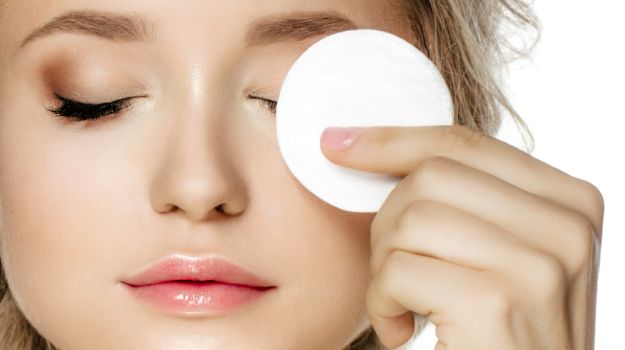Ayurveda for Great Skin
Kapha skin type that is thick, oily, typically very light and cool to the touch. Kapha skin shows enlarged pores, blackheads and water retention in the process of imbalance.
With this understanding, let's explore Ayurvedic rituals that work on delivering beauty. Here are three areas of life where listening to your dosha and taking action to correct any imbalances is crucial to the quality of your skin:
1. Diet
Food and water forms the core of nourishment for your skin, so you need to eat well and eat for your type. Its obvious, but Ayurveda recommends that you should eat by acknowledging the body's natural triggers of thirst and hunger.
The quantity of your consumption at a time is also important. Ayurveda suggests that your stomach should be filled with food, water and air at mealtime, with an emphasis on fresh foods. The basic thought in ayurveda is that incompatible food creates toxins in your body, which in turn creates imbalance in your basic doshas.
Some of the best foods to correct imbalances in your dosha:
Vata: Avoid dried fruits, apples, melons, potatoes, tomatoes, eggplants, beef and peas. Eat avocados, sweet fruits, cherries and oranges.
Pitta: Avoid tomatoes, garlic, sour fruits, bananas, peanuts and spicy foods. Eat prouts, green salads, sunflower seeds, mangos, pears, plums and mushrooms.
Kapha: Avoid coconut, dates, pineapples and dairy products. Eat dried fruits, pomegranate, cranberries and basmati rice.
2. Lifestyle & Exercise
Your daily lifestyle habits and exercise have a great impact on the health and vitality of your skin. Overarching lifestyle guidance in Ayurveda includes waking up early before sunrise and going to sleep before 10PM during night; eating breakfast before 8AM in the morning, lunch before noon and dinner before the sunsets.
Great Skin with Ayurveda
exercise and physical activity is beneficial across the board for the skin (and for eliminating the toxins that cause skin ailments).
Some of the best yoga asanas to correct imbalances in your dosha:
Vata: head stands, backward bends, plows, cobra, locust and lotus poses
Pitta: shoulder stands, half wheel, hidden lotus and fish poses
Kapha: boat, lion, palm tree, half wheel and spinal twist poses
3. Skin Care
Now that we've discussed on how to eat and move, let's focus on how to really treat the skin depending on your dosha.
Vata: This skin type tends to dry out quickly and is especially vulnerable to shifts in weather. Vata skin must be protected from harsh cold and heat, and pampered to retain its moisture and natural oil. You need to avoid hot water baths and showers, as it dries your skin and one needs to be sure to use pH-balanced soaps as well as drink lots of water for hydration.
You should also steam your skin with mint leaves and water to open your pores and increase circulation. Try to gently massage aloe vera onto your skin when you need extra moisture. Avocado, that is rich in Antioxidant is also great for vata skin as it is full of vitamins and fatty acids.
Pitta: This skin is prone to rashes, so it needs to be treated with gentle care. Cleansing with rose water, exfoliating with a sugar scrub and moisturizing with coconut oil are some excellent options one can improvise.
Kapha: This skin type is oily in nature and is prone to acne as well. It Is very important to avoid milk or dairy products in your diet and for skin care, exfoliating with sea salt and honey scrub is a good option, along with adding turmeric to your regimen.gurt is a natural cooling agent.
Any physical activity, such as swimming or gardening performed in calm and cool environments will help reduce body heat.
You can wear clothes in light pastel colours for a cooling effect. Fabrics such as linen and cotton keep the body cool.
You can also take a mixture of milk and one teaspoon almond powder with a pinch of turmeric powder to reduce body heat with Ayurveda.
Reduce consumption of too much salt, oil and spices as they add heat to the body. Avoid processed and fast foods for the same reason.
There is no single way to reduce body heat with Ayurveda, which is actually a vast assortment of remedies. It is better to consult an Ayurvedic physician to get advice on the best course of treatment.



 Contact Us
Contact Us






 Hospitals
Hospitals
 Doctors
Doctors
 Diagnostic
Diagnostic
 Pharmacy
Pharmacy
 Health Tips
Health Tips
 Blog
Blog

















Comments